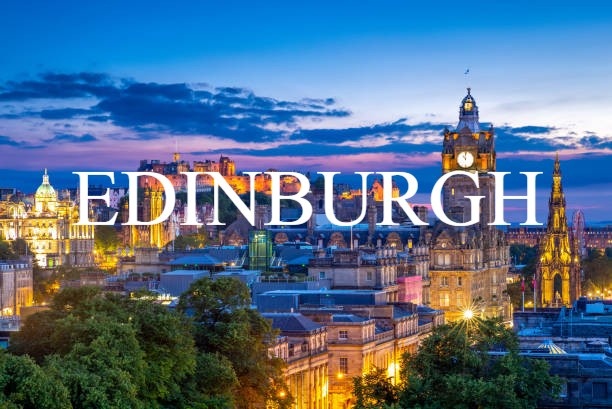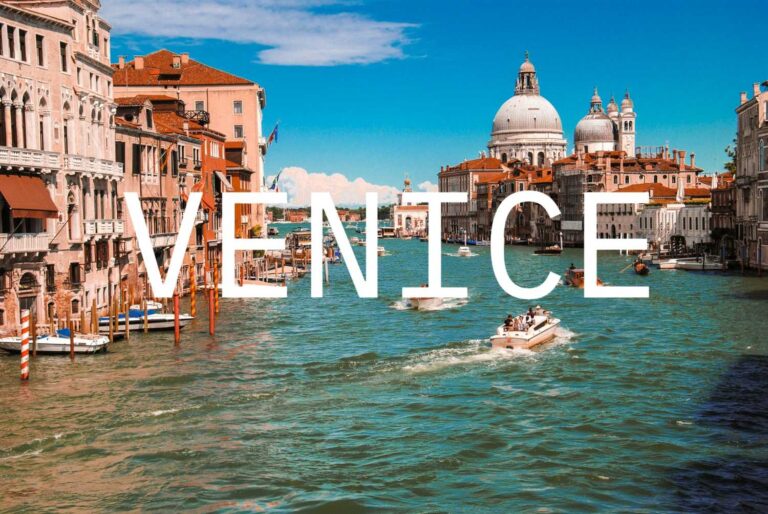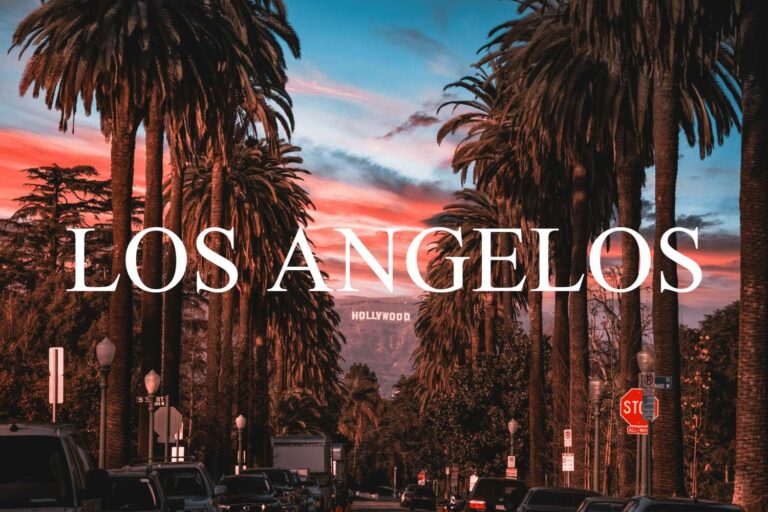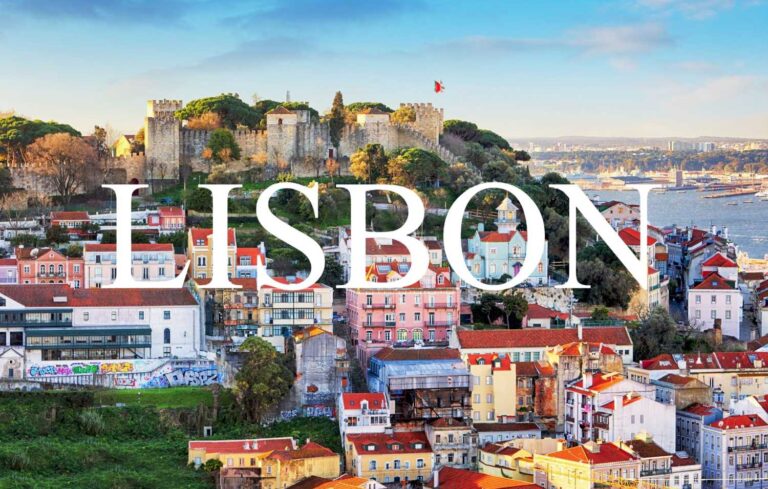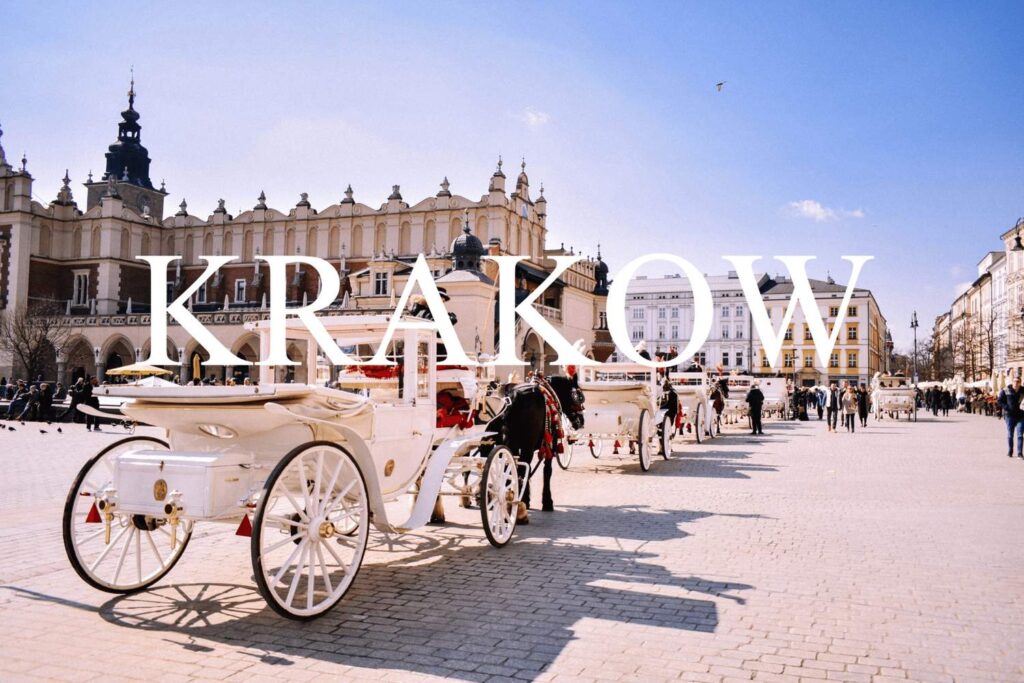
Krakow, Poland’s cultural gem, is a city where medieval elegance meets modern vibrancy. From the cobblestone charm of its UNESCO-listed Old Town to the regal grandeur of Wawel Castle, Krakow is a living museum rich with history, art, and architectural splendor.
Stroll through the lively Main Market Square, explore Gothic cathedrals and Renaissance courtyards, or unwind in a cozy café tucked beneath centuries-old arches. Just beyond the center, Kazimierz—Krakow’s historic Jewish quarter—offers a bohemian blend of street art, vintage shops, and buzzing nightlife.
With world-class museums, soul-stirring memorials like Auschwitz-Birkenau nearby, and a food scene that ranges from hearty Polish comfort to contemporary fusion, Krakow delivers an unforgettable blend of culture, cuisine, and charm.
Whether you’re here for the history or the atmosphere, Krakow invites you to step into its story.
🗓️ Best Time to Visit Krakow
🌸 April to June & September to October (Spring and Early Autumn)
These months offer mild weather (10°C to 20°C) and fewer tourists, making it ideal for exploring the city comfortably.
❄️ December to February (Winter)
If you love festive vibes and cozy Christmas markets, winter is enchanting here—though it can be cold, often below freezing.
💵 Currency & Travel Essentials
- Currency: Polish Złoty (PLN)
- Language: Polish (English widely spoken in tourist areas)
- Transportation: Trams, buses, taxis, and bike rentals
- Average Daily Budget:
- Budget: PLN 100–200
- Mid-range: PLN 200–400
- Luxury: PLN 400+
🏰 10 Best Places to Visit in Krakow
Main Market Square (Rynek Główny)
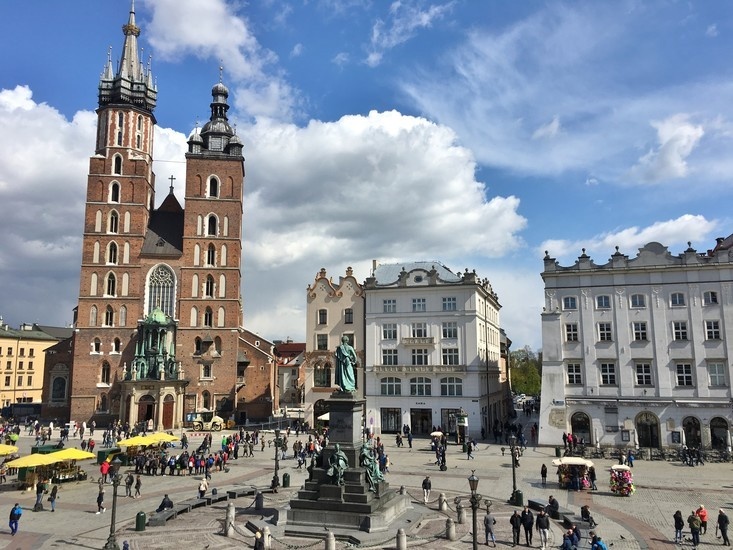
At the very center of Kraków’s vibrant Old Town lies the iconic Main Market Square (Rynek Główny), Europe’s largest medieval town square and a bustling hub of history, culture, and local life. Surrounded by stunning architecture, lively cafés, and rich traditions, Rynek Główny invites visitors to step back in time while enjoying the energy of a modern city. Whether you’re here to admire historic landmarks, enjoy street performances, or savor Polish cuisine, this square is the beating heart of Kraków’s charm.
🌟 Highlights of Main Market Square (Rynek Główny)
• 🕍 Historic Landmarks
Marvel at the grandeur of the Cloth Hall (Sukiennice), a Renaissance trading hall that now hosts charming shops and an art gallery. Don’t miss the towering St. Mary’s Basilica, famous for its stunning Gothic architecture and the hourly trumpet call (Hejnał mariacki) from its highest tower.
• 🎭 Vibrant Street Life
Experience street musicians, artists, and traditional horse-drawn carriages adding color and sound to the square’s lively atmosphere.
• 🍽️ Cafés and Restaurants
Enjoy authentic Polish dishes, international flavors, or a coffee at one of the many outdoor terraces surrounding the square — perfect for people-watching and soaking up the ambiance.
• 🎉 Cultural Events and Festivals
From Christmas markets and Easter fairs to summer concerts and cultural festivals, Rynek Główny is a year-round stage for celebration and tradition.
• 🛍️ Shopping
Browse local crafts, souvenirs, and fine art within the Cloth Hall and nearby boutiques, ideal for unique gifts and keepsakes.
• 📸 Photo Opportunities
The vibrant mix of colorful buildings, historic monuments, and lively crowds make this square a photographer’s dream.
🚗 How to Get There
• By Foot:
Easily accessible on foot from all parts of Kraków’s Old Town.
• By Public Transport:
Multiple tram lines and buses stop near the square, making it convenient to reach from other city areas.
• By Car:
Parking is limited in the Old Town, so walking or public transport is recommended.
🕒 Visitor Information
• Best Time to Visit:
Spring through autumn offers pleasant weather to enjoy outdoor seating and festivals. Early mornings are quieter if you prefer a peaceful visit.
• Recommended Visit Duration:
Plan at least 1–2 hours to explore the square, visit landmarks, and soak in the atmosphere.
• Admission Fees:
The square itself is free to access. Entrance fees apply only for museums, galleries, or guided tours.
💡 Travel Tips
• 👟 Wear Comfortable Shoes:
Cobblestone streets can be uneven—comfortable footwear is a must.
• 🕰️ Time Your Visit:
Try to be at St. Mary’s Basilica tower on the hour to catch the traditional trumpet call.
• 🎒 Be Mindful of Pickpockets:
As with any popular tourist spot, keep an eye on your belongings.
• 📷 Capture the Magic:
Visit during golden hour for stunning light and vibrant photos.
🌟 Final Thoughts
Main Market Square (Rynek Główny) is more than just a historic plaza—it’s the soul of Kraków, where centuries of history blend seamlessly with modern life. Whether you’re sipping coffee at a sidewalk café, exploring Gothic spires, or joining in a festive celebration, Rynek Główny promises an unforgettable experience filled with culture, beauty, and lively Polish spirit.
Wawel Castle
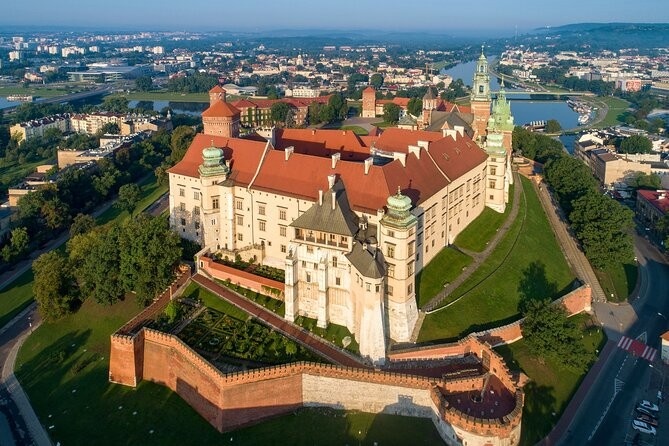
Perched majestically atop Wawel Hill in the heart of Kraków, Wawel Castle is one of Poland’s most significant cultural landmarks and a symbol of national pride. This stunning medieval fortress, once home to Polish kings and queens, offers visitors a fascinating glimpse into the country’s royal history, architectural splendor, and artistic heritage. Whether you’re wandering through its grand chambers, exploring the impressive courtyards, or admiring priceless art collections, Wawel Castle promises an unforgettable journey into Poland’s rich past.
🌟 Highlights of Wawel Castle
• 🏛️ Royal Apartments and State Rooms
Step inside the beautifully preserved royal apartments, featuring exquisite Renaissance and Baroque interiors filled with historic furnishings, tapestries, and artwork.
• 🖼️ Wawel Cathedral
Adjacent to the castle, this iconic cathedral is the coronation site of Polish monarchs and the resting place of national heroes, offering breathtaking Gothic and Renaissance architecture.
• 🐉 The Wawel Dragon Legend
Discover the famous legend of the Wawel Dragon, whose cave lies beneath the castle hill—a favorite story that adds a magical touch to your visit.
• 🏰 Castle Museums and Art Collections
Explore diverse exhibitions showcasing medieval armor, royal jewelry, ceramics, and paintings by renowned artists like Leonardo da Vinci and Raphael.
• 🌳 Castle Grounds and Gardens
Stroll through the beautifully maintained courtyards and gardens, perfect for leisurely walks and stunning views of the Vistula River.
• 🗺️ Guided Tours and Educational Programs
Join guided tours or attend special events to deepen your understanding of Wawel’s historical and cultural significance.
🚗 How to Get There
• By Foot:
Located within Kraków’s Old Town, Wawel Castle is easily reachable on foot from the city center.
• By Public Transport:
Numerous tram and bus lines stop near Wawel Hill, providing convenient access.
🕒 Visitor Information
• Opening Hours:
Typically open daily, but hours vary by season and exhibition; check official schedules before visiting.
• Recommended Visit Duration:
Allow at least 2–3 hours to fully explore the castle complex and cathedral.
• Admission Fees:
Tickets vary by exhibition; combined passes are available for better value. Advance booking is recommended during peak seasons.
💡 Travel Tips
• 🎟️ Book Tickets in Advance:
Avoid long lines by purchasing tickets online ahead of your visit.
• 👟 Wear Comfortable Shoes:
Expect to do a fair amount of walking on cobblestone paths and stairs.
• 📷 Respect Photography Rules:
Photography is allowed in some areas but restricted in others—always follow signs and staff instructions.
• 🗣️ Consider a Guided Tour:
Enhance your experience with a knowledgeable guide who can share fascinating stories and historical insights.
Wawel Castle stands as a magnificent testament to Poland’s royal heritage and artistic achievement. A visit here transports you back in time, immersing you in the grandeur of medieval Europe and the rich stories that shaped Kraków and the nation. Whether you’re a history buff, art lover, or casual traveler, Wawel Castle is an essential stop on any Polish itinerary.
St. Mary’s Basilica
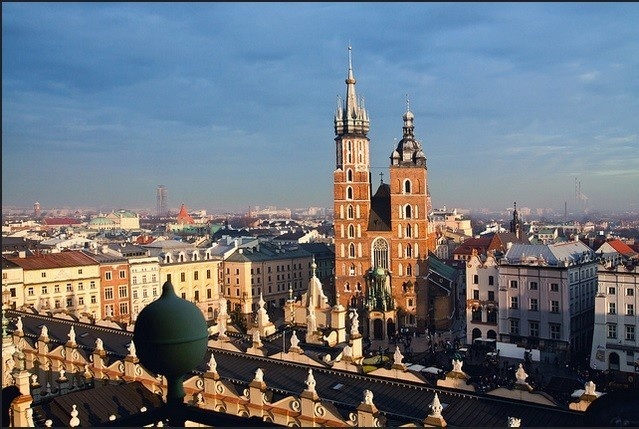
Dominating Kraków’s Main Market Square skyline, St. Mary’s Basilica (Kościół Mariacki) is a stunning example of Gothic architecture and a symbol of the city’s rich history and culture. Famous worldwide for its towering twin spires and the legendary hourly trumpet call, this basilica draws visitors eager to admire its breathtaking interiors, priceless artworks, and centuries-old traditions. A visit to St. Mary’s Basilica offers a deep dive into Kraków’s spiritual and artistic heritage.
🌟 Highlights of St. Mary’s Basilica
• 🕍 Architectural Grandeur
Marvel at the basilica’s impressive exterior featuring two asymmetrical towers—one serving as a watchtower with panoramic views, the other housing the famous trumpet herald.
• 🎺 The Hejnał Mariacki
Every hour, a trumpeter plays the traditional Hejnał from the taller tower, commemorating a 13th-century watchman’s warning of an impending attack—a moving and unique Kraków tradition.
• 🎨 Veit Stoss Altarpiece
Inside, be captivated by the world-renowned wooden altarpiece carved by Veit Stoss in the late 15th century. Its intricate details and vibrant colors tell biblical stories with remarkable artistry.
• 🌈 Stained Glass Windows
Admire the stunning stained glass that bathes the basilica’s interior in colorful light, enhancing the spiritual atmosphere.
• 🏛️ Rich History
Founded in the 14th century, the basilica has witnessed countless historic events and remains a vibrant place of worship and cultural significance.
• 📸 Photography
While photography is generally restricted inside to preserve the artworks, the basilica’s façade and square views offer plenty of photo-worthy moments.
🚗 How to Get There
• By Foot:
Located in Kraków’s Main Market Square, it’s easily accessible by walking from anywhere in the Old Town.
• By Public Transport:
Nearby tram and bus stops provide convenient access.
🕒 Visitor Information
• Opening Hours:
Typically open daily, but hours vary—check ahead for service times and special events.
• Admission Fees:
Entry requires a small fee to support maintenance and preservation efforts.
• Recommended Visit Duration:
Spend about 30–60 minutes exploring the basilica’s interior and soaking up its atmosphere.
💡 Travel Tips
• 🎫 Buy Tickets in Advance:
Avoid lines by purchasing tickets online or early in the day.
• 👟 Wear Respectful Attire:
As an active place of worship, dress modestly when visiting.
• 📷 Visit the Tower:
Climb the tower for panoramic views of Kraków’s rooftops and the Main Market Square.
• 🕰️ Catch the Hejnał:
Don’t miss the trumpet call on the hour for a truly authentic Kraków experience.
St. Mary’s Basilica is a must-see landmark that beautifully combines art, history, and tradition. Its awe-inspiring altarpiece, iconic trumpet call, and architectural splendor make it a treasured gem in Kraków’s cultural landscape. Whether you’re a history buff, art lover, or simply exploring the city’s heart, this basilica offers an unforgettable glimpse into Poland’s rich heritage.
Kazimierz District
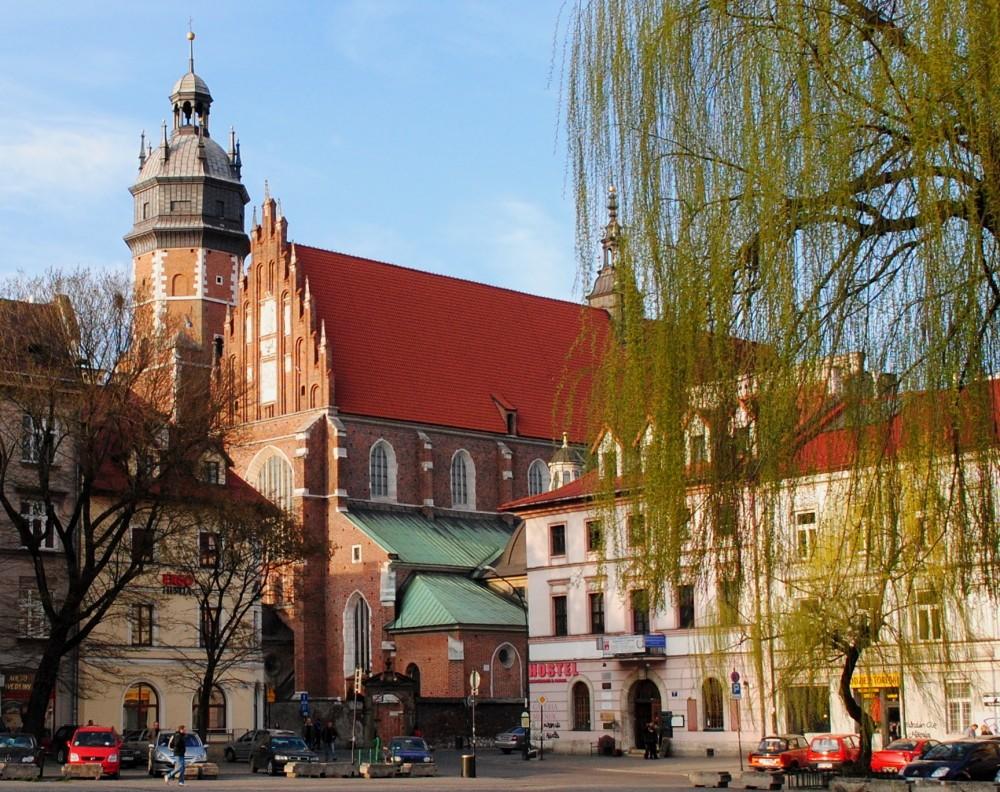
Nestled on the banks of the Vistula River, the Kazimierz District is Kraków’s lively historic Jewish quarter, renowned for its rich heritage, eclectic arts scene, and buzzing atmosphere. This charming neighborhood invites visitors to explore its narrow streets filled with synagogues, galleries, cozy cafes, and vibrant nightlife. Whether you’re delving into Jewish history, sampling traditional cuisine, or enjoying live music, Kazimierz offers an authentic and soulful experience that captures the spirit of Kraków’s past and present.
🌟 Highlights of Kazimierz District
• 🕍 Historic Synagogues
Visit iconic synagogues like the Old Synagogue, Remuh Synagogue, and Tempel Synagogue, each telling stories of the district’s Jewish heritage and resilience.
• 🎭 Art Galleries and Street Art
Discover local creativity in numerous galleries, boutique shops, and vibrant street murals that add color and character to the neighborhood.
• 🍽️ Traditional and Contemporary Cuisine
Enjoy delicious Jewish and Polish dishes in quaint restaurants and eateries, such as pierogi, challah bread, and hearty stews, alongside modern culinary delights.
• 🎶 Live Music and Nightlife
Kazimierz comes alive after dark with jazz clubs, bars, and venues hosting live performances that draw both locals and tourists.
• 📚 Cultural and Historical Museums
Explore museums like the Galicia Jewish Museum, which offers moving exhibitions on Jewish culture and history in Poland.
• 🚶♂️ Walking Tours and Festivals
Join guided walking tours to learn about the district’s history or attend annual events like the Jewish Culture Festival, which celebrates music, art, and traditions.
🚗 How to Get There
• By Foot:
Kazimierz is a short walk from Kraków’s Old Town, easily accessible for visitors exploring the city center.
• By Public Transport:
Several tram and bus lines connect Kazimierz with other parts of Kraków.
🕒 Visitor Information
• Best Time to Visit:
Year-round, with summer festivals and outdoor events adding extra charm.
• Recommended Visit Duration:
Spend at least half a day exploring, or stay longer to soak up the nightlife.
• Admission Fees:
Most synagogues and museums charge a small entry fee; many cafes and galleries are free to browse.
💡 Travel Tips
• 🎟️ Check Museum Hours:
Some cultural sites have limited opening hours, so plan accordingly.
• 👟 Wear Comfortable Shoes:
Enjoy leisurely strolls on cobbled streets and uneven pavements.
• 📷 Respect Local Culture:
Be mindful when photographing religious sites and residents.
• 🥘 Try Local Specialties:
Don’t miss out on tasting traditional Jewish and Polish dishes at authentic eateries.
Kazimierz District is a vibrant mosaic of history, culture, and contemporary life, offering visitors a deep dive into Kraków’s Jewish heritage alongside modern artistic and culinary delights. Whether you’re a history enthusiast, foodie, or music lover, Kazimierz welcomes you with open arms and unforgettable experiences.
Schindler’s Factory Museum
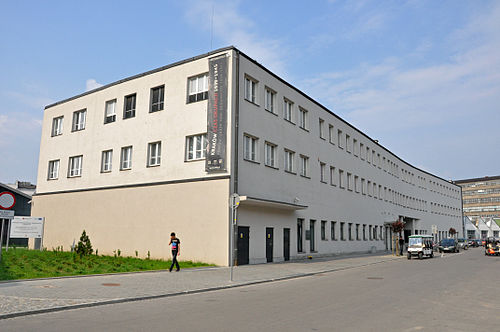
Step inside the historic walls of Schindler’s Factory Museum (Fabryka Schindlera), a compelling museum that brings to life Kraków’s complex and poignant history during World War II. Located in the former enamel factory of Oskar Schindler, whose courageous actions saved over 1,000 Jewish lives, this museum offers a deeply moving and educational experience. Through immersive exhibits, personal stories, and powerful artifacts, visitors gain a profound understanding of the city’s wartime struggles and resilience.
🌟 Highlights of Schindler’s Factory Museum
• 🕯️ Emotional Exhibits
Discover detailed displays depicting life under Nazi occupation, including the impact on Kraków’s Jewish community, the establishment of the Kraków Ghetto, and resistance efforts.
• 🏭 Original Factory Setting
Explore the actual factory where Schindler’s enamelware was produced, preserved with authentic machinery and period details that transport visitors back in time.
• 🎥 Multimedia Presentations
Engage with interactive displays, photographs, personal testimonies, and documentary films that enrich the storytelling and provide context.
• 👤 Oskar Schindler’s Story
Learn about the remarkable man behind the famous “Schindler’s List,” whose bravery and determination saved many from the horrors of the Holocaust.
• 🕍 Historical Context
The museum places Schindler’s story within the broader narrative of Nazi-occupied Kraków, offering insights into daily life, persecution, and survival.
• 📚 Educational Programs
Workshops and guided tours provide deeper understanding for visitors of all ages.
🚗 How to Get There
• By Foot:
Located in Kraków’s Podgórze district, it’s accessible by a scenic walk from the Old Town across the historic bridges.
• By Public Transport:
Trams and buses serve the area, with nearby stops close to the museum.
🕒 Visitor Information
• Opening Hours:
Typically open daily, but check official schedules as times may vary.
• Admission Fees:
Tickets are required; discounts often available for students and seniors.
• Recommended Visit Duration:
Plan for 1.5 to 2 hours to fully absorb the exhibits and multimedia presentations.
💡 Travel Tips
• 🎫 Book Tickets in Advance:
The museum is popular, so pre-booking tickets can save waiting time.
• 👟 Prepare for Walking:
The museum is large and requires time to explore thoroughly.
• 🕰️ Allow Time for Reflection:
This museum offers a solemn and thought-provoking experience—take time to absorb the stories.
• 📸 Photography Restrictions:
Check rules regarding photography inside exhibits to respect the sensitive nature of the content.
Schindler’s Factory Museum is a moving tribute to courage and survival amid one of history’s darkest periods. It offers visitors a profound connection to Kraków’s past, highlighting stories of hope and humanity against the backdrop of war. For anyone interested in history, human rights, or World War II, this museum is an essential stop on your Kraków itinerary.
Planty Park
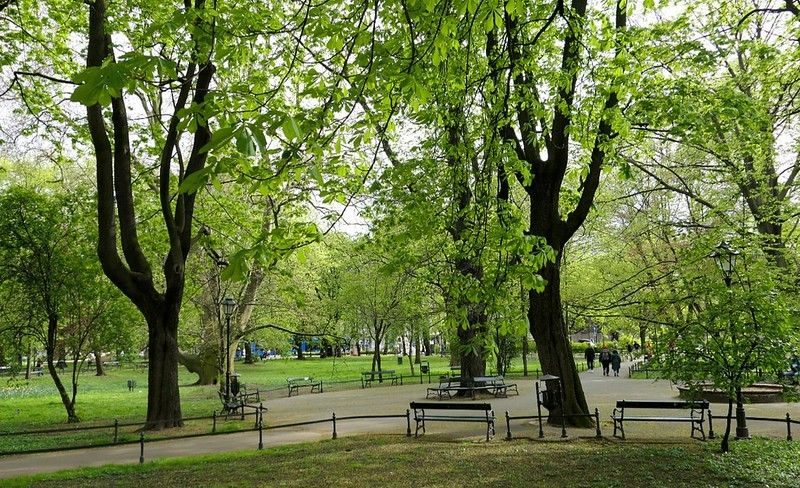
Encircling Kraków’s historic Old Town, Planty Park is a beautiful, tree-lined green space that offers a peaceful retreat from the city’s bustling streets. Created on the site of the old medieval city walls, Planty serves as a scenic walking path filled with gardens, fountains, statues, and benches — making it the perfect spot to relax, stroll, or people-watch while soaking in Kraków’s rich history and vibrant atmosphere. Whether you’re a local seeking a quiet break or a visitor exploring the city, Planty Park is an inviting oasis you won’t want to miss.
🌟 Highlights of Planty Park
• 🌿 Historic City Walls and Pathways
Walk along the park’s winding paths that follow the outline of Kraków’s former defensive walls, offering a unique blend of history and nature.
• 🗿 Statues and Monuments
Discover numerous statues honoring famous Polish figures, including poets, scientists, and national heroes, scattered throughout the park.
• 💐 Floral Gardens and Greenery
Enjoy beautifully manicured flowerbeds, shaded trees, and lush lawns—perfect for picnics or a leisurely afternoon.
• 🛋️ Peaceful Benches and Rest Areas
Take a break on one of the many benches nestled beneath the trees, ideal for reading, relaxing, or people-watching.
• 📸 Photo Opportunities
Capture charming scenes of the park’s fountains, sculptures, and views of the Old Town’s medieval architecture just beyond the trees.
• 🚶♂️ Easy Access to Kraków’s Old Town
Planty surrounds the Old Town, making it a convenient and scenic route connecting popular landmarks like the Main Market Square and Wawel Castle.
🚗 How to Get There
• By Foot:
Planty Park is best explored on foot, with numerous entry points around Kraków’s Old Town.
• By Public Transport:
Trams and buses have stops near the Old Town, providing easy access to the park.
🕒 Visitor Information
• Best Time to Visit:
Ideal during spring and summer when the gardens are in full bloom, but pleasant year-round.
• Recommended Visit Duration:
Plan for a leisurely 1–2 hour stroll to fully enjoy the park’s beauty.
• Admission:
Free to enter and open daily.
💡 Travel Tips
• 👟 Wear Comfortable Shoes:
The park’s paths are perfect for walking, so comfortable footwear is recommended.
• 🧺 Pack a Picnic:
Bring snacks or a light lunch to enjoy on the park’s grassy areas.
• 🌞 Visit Early or Late:
For a quieter experience, visit early morning or late afternoon.
• 📷 Bring a Camera:
The park’s natural beauty and historic surroundings offer lovely photo opportunities.
🌟 Final Thoughts
Planty Park is a tranquil green ring that beautifully balances Kraków’s rich history with refreshing natural scenery. Perfect for a peaceful walk, a moment of relaxation, or a scenic shortcut around the city’s landmarks, Planty is an essential stop to experience the heart and soul of Kraków.
Cloth Hall (Sukiennice)
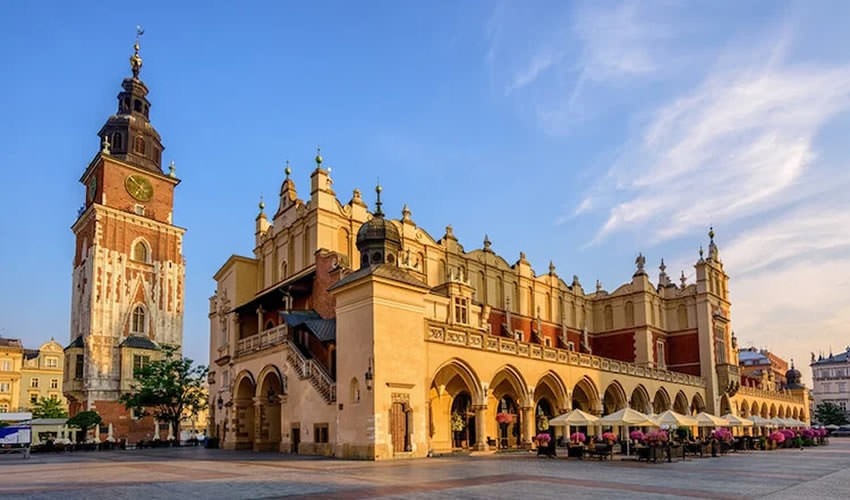
At the heart of Kraków’s Main Market Square stands the magnificent Cloth Hall (Sukiennice), a historic Renaissance-era market hall that has been a bustling trade center for centuries. Once a hub for merchants trading textiles and exotic goods, today it remains a vibrant symbol of Kraków’s rich commercial and cultural heritage. Visitors flock here to browse local crafts, admire the stunning architecture, and soak up the lively atmosphere of one of Poland’s most beloved landmarks.
🌟 Highlights of Cloth Hall (Sukiennice)
• 🏛️ Architectural Beauty
The Cloth Hall’s grand arcade features elegant arches, ornate details, and a distinctive Renaissance-style façade, making it a striking centerpiece of the Main Market Square.
• 🎨 Local Art and Handicrafts
Inside, you’ll find stalls selling traditional Polish crafts, amber jewelry, handmade souvenirs, and fine artwork—perfect for unique gifts and keepsakes.
• 🖼️ Sukiennice Museum Upstairs
Venture upstairs to the Sukiennice Museum, part of the National Museum, showcasing a rich collection of Polish 19th-century paintings and sculptures.
• ☕ Cafés and Street Life
Relax at one of the cafés lining the hall or the square, watching street performers and soaking in the vibrant local life.
• 🛒 Market Tradition
The Cloth Hall continues its centuries-old tradition as a marketplace, blending history with the buzz of modern commerce.
• 📸 Photo Opportunities
The blend of historic architecture and colorful market stalls offers fantastic photo moments.
🚗 How to Get There
• By Foot:
Located in Kraków’s Main Market Square, it’s easily reachable on foot from any part of the Old Town.
• By Public Transport:
Trams and buses stop near the square, offering easy access from across the city.
🕒 Visitor Information
• Best Time to Visit:
Morning or early afternoon to avoid crowds and fully enjoy the market atmosphere.
• Recommended Visit Duration:
Spend about 1–2 hours exploring the stalls, museum, and surrounding area.
• Admission Fees:
Entry to the market is free; a ticket is required for the Sukiennice Museum upstairs.
💡 Travel Tips
• 🎁 Bring Cash:
Many vendors accept cash only, so have some Polish złoty handy.
• 👟 Wear Comfortable Shoes:
Cobblestone surfaces and strolling through the market require comfy footwear.
• 📷 Capture Details:
Focus on architectural features and colorful stalls for vibrant photos.
• 🎨 Check Museum Hours:
If planning to visit the Sukiennice Museum, confirm opening times in advance.
Cloth Hall (Sukiennice) is a must-visit destination that perfectly captures Kraków’s historic charm and lively culture. Whether you’re hunting for authentic souvenirs, admiring fine art, or simply enjoying the bustling atmosphere, this marketplace offers a timeless experience where past and present meet beautifully.
The Barbican
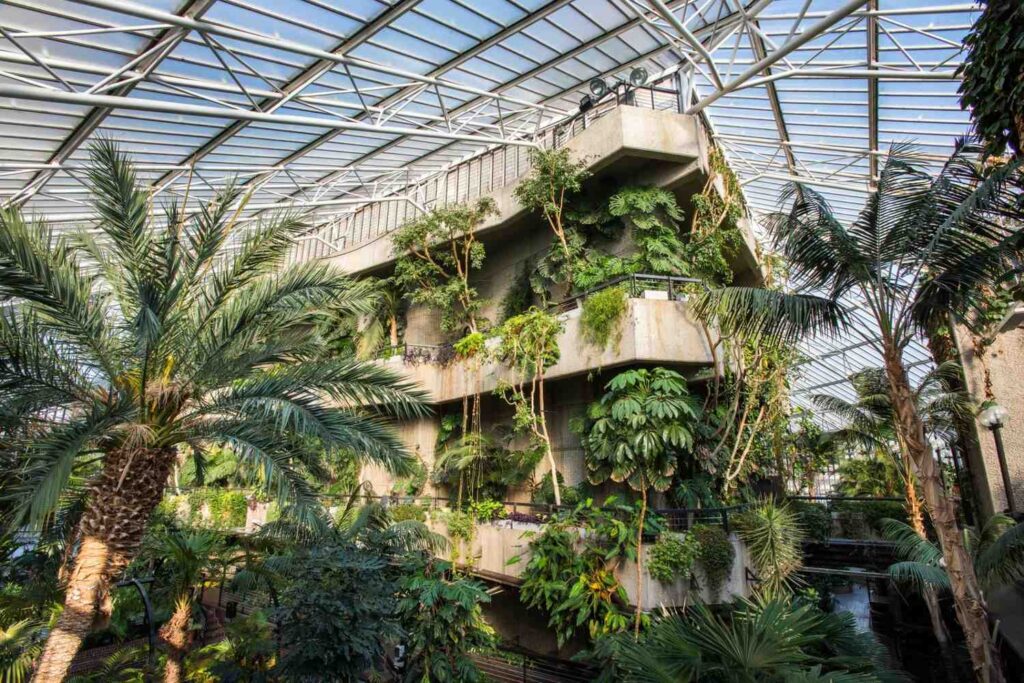
Standing as one of the best-preserved medieval fortifications in Europe, The Barbican is a striking symbol of Kraków’s rich history and defensive architecture. Located just outside the Old Town’s city walls, this impressive circular fortress once protected the main entrance to the city and now serves as a captivating monument that invites visitors to step back in time. Whether you’re fascinated by medieval military design or simply want to explore Kraków’s ancient past, The Barbican offers an authentic glimpse into the city’s storied heritage.
🌟 Highlights of The Barbican
• 🏯 Unique Circular Fortress Design
Marvel at The Barbican’s distinctive round shape, massive stone walls, and defensive towers — a rare architectural gem dating back to the 15th century.
• 🏰 Historical Gateway to Kraków
Walk through the original gateway that connected The Barbican to the Old Town via the Florian Gate, experiencing the route medieval visitors once took entering the city.
• 🛡️ Medieval Defense Features
Explore arrow slits, thick walls, and battlements that showcase the ingenious defensive strategies of the era.
• 🏛️ Exhibitions and Displays
Inside, learn about Kraków’s medieval fortifications, weaponry, and city history through informative exhibits.
• 📸 Scenic Views and Photo Ops
The elevated walkways provide unique vantage points for photographing Kraków’s Old Town and the fortress itself.
• 🎫 Cultural Events and Festivals
The Barbican occasionally hosts medieval fairs, reenactments, and cultural events that bring history to life.
🚶♂️ How to Get There
• By Foot:
Just a short walk from Kraków’s Main Market Square, The Barbican is easily accessible on foot.
• By Public Transport:
Nearby tram stops connect The Barbican with other parts of the city.
🕒 Visitor Information
• Opening Hours:
Typically open daily with varying seasonal hours; check official websites before visiting.
• Recommended Visit Duration:
Spend about 1 hour exploring the fortress and exhibitions.
• Admission Fees:
Entrance fees apply, often combined with tickets to nearby museums or city walls.
💡 Travel Tips
• 🎟️ Combine Tickets:
Look for combined entry passes that include The Barbican and other historic sites for savings.
• 👟 Wear Comfortable Shoes:
Be prepared for walking on uneven stone surfaces inside the fortress.
• 📷 Bring a Camera:
Capture the stunning architecture and views from the ramparts.
• 🗣️ Join a Guided Tour:
Enhance your visit with stories and insights from expert guides.
🌟 Final Thoughts
The Barbican is a must-see for history lovers and anyone eager to explore Kraków’s medieval defenses. Its impressive structure, rich exhibits, and prime location at the city’s entrance make it a captivating stop on any tour of Kraków’s Old Town. Step inside, and walk through the gates of history!
Nowa Huta
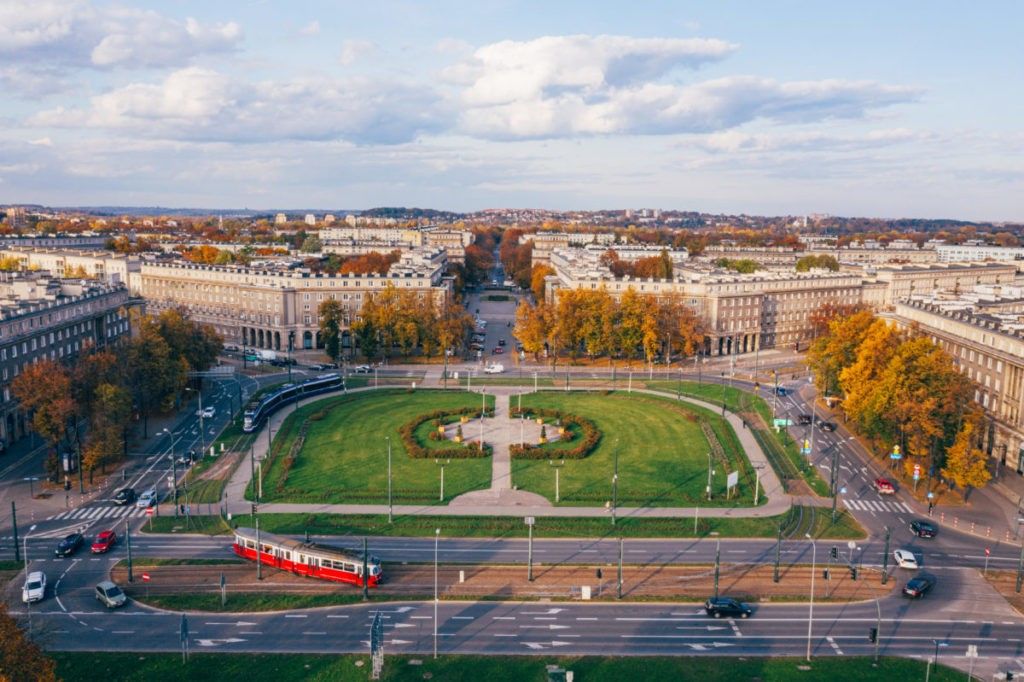
Located just east of Kraków’s historic center, Nowa Huta stands out as a fascinating example of socialist urban planning and industrial heritage. Built in the 1950s as a model communist city, this distinctive district offers visitors a glimpse into Poland’s post-war history, complete with grand architecture, wide avenues, and a spirit of resilience. Today, Nowa Huta blends its industrial past with a vibrant local culture, making it a must-see for history buffs, architecture enthusiasts, and curious travelers.
🌟 Highlights of Nowa Huta
• 🏢 Socialist Realist Architecture
Explore monumental buildings, wide boulevards, and green spaces designed to embody the ideals of the socialist era. Notable landmarks include the imposing Arka Pana Church and the central Plac Centralny (Central Square).
• 🕊️ Arka Pana Church
This striking modernist church is an architectural marvel, symbolizing hope and spiritual resilience amidst a politically charged era. Its dramatic design and beautiful stained glass make it a standout attraction.
• 🏭 Industrial Heritage
Visit the historic Nowa Huta Steelworks, once the heart of Poland’s steel industry and a symbol of the country’s industrial might.
• 🎨 Cultural Scene
Nowa Huta hosts galleries, theaters, and festivals that celebrate local creativity and the community’s evolving identity.
• 🚶♂️ Guided Tours
Learn about the history, architecture, and social fabric of Nowa Huta through guided walking tours that bring its unique story to life.
• 📸 Photography
Capture the contrast between imposing Soviet-era structures and colorful street art that adds a modern flair.
🚗 How to Get There
• By Public Transport:
Trams and buses connect Nowa Huta with Kraków’s city center, offering easy and affordable access.
• By Car:
Parking is available, but public transport is recommended due to traffic and parking limitations.
🕒 Visitor Information
• Best Time to Visit:
Spring through autumn offers pleasant weather for walking tours and outdoor exploration.
• Recommended Visit Duration:
Plan for 2–3 hours to fully experience the district’s key sites and cultural spots.
• Admission Fees:
Most outdoor areas are free to explore; some museums and guided tours may have a fee.
💡 Travel Tips
• 🎧 Take a Guided Tour:
To understand the full historical and cultural context, guided tours are highly recommended.
• 👟 Wear Comfortable Shoes:
The district is expansive and best explored on foot.
• 📷 Look for Street Art:
Spot vibrant murals and graffiti that showcase Nowa Huta’s contemporary artistic spirit.
🌟 Final Thoughts
Nowa Huta offers a rare chance to explore a unique chapter in Poland’s history through its distinctive urban design and resilient community. Whether you’re interested in architecture, history, or local culture, this district provides an eye-opening and memorable experience beyond Kraków’s medieval charm.
Auschwitz-Birkenau Memorial and Museum
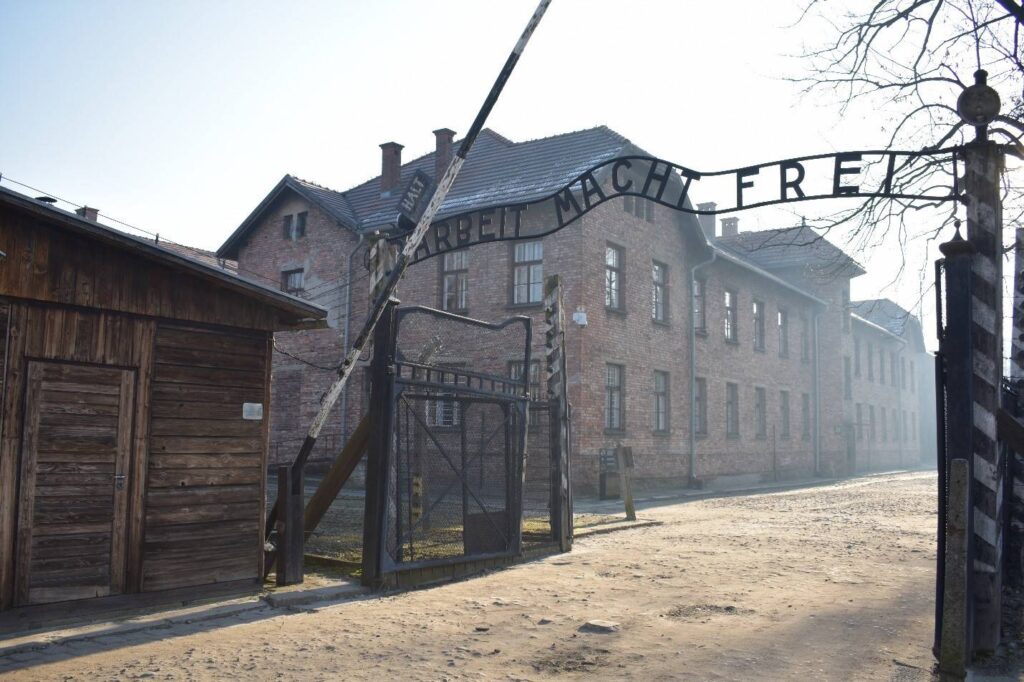
Located near the town of Oświęcim, about 70 kilometers from Kraków, the Auschwitz-Birkenau Memorial and Museum stands as one of the most significant and solemn historical sites in the world. This former Nazi concentration and extermination camp is preserved as a powerful reminder of the atrocities of the Holocaust and a tribute to the millions of lives lost. Visiting Auschwitz-Birkenau offers a deeply moving and educational experience, encouraging reflection, remembrance, and a commitment to human rights.
🌟 Highlights of Auschwitz-Birkenau Memorial and Museum
• 🏚️ Original Camp Structures
Explore the preserved barracks, watchtowers, gas chambers, and crematoria that tell the stark story of the camp’s operation during World War II.
• 🕯️ Memorial Sites
Pay respects at the solemn memorials honoring victims from across Europe, with thousands of personal artifacts, photographs, and testimonies displayed.
• 📜 Educational Exhibits
Engage with detailed exhibitions that provide historical context, survivor stories, and evidence documenting the horrors of the Holocaust.
• 🎧 Guided Tours and Audio Guides
Gain deeper understanding through expert-led tours or comprehensive audio guides available in multiple languages.
• 🎥 Documentary Films and Presentations
Watch informative films that bring history to life and emphasize the importance of remembering.
• 🌿 Peaceful Reflection Areas
Designated quiet zones and memorial gardens offer spaces for contemplation and remembrance.
🚗 How to Get There
• By Car or Shuttle:
Easily reached by car or organized shuttle tours departing from Kraków and other nearby cities.
• By Public Transport:
Bus services connect Oświęcim with Kraków; however, most visitors opt for guided tours due to the sensitive nature of the visit.
🕒 Visitor Information
• Opening Hours:
Open daily except select holidays; hours may vary seasonally. Check the official website before visiting.
• Recommended Visit Duration:
Plan at least 3 to 4 hours to fully experience both Auschwitz I and Auschwitz II-Birkenau sites.
• Admission:
Entrance is free, but guided tours require advance booking due to high demand.
💡 Travel Tips
• 🎟️ Book Tours in Advance:
Guided tours fill up quickly; reserve your spot well ahead to ensure entry.
• 🤫 Respect the Site:
Maintain a solemn demeanor; photography is restricted in certain areas.
• 👟 Wear Comfortable Shoes:
Expect extensive walking on uneven surfaces.
• 🧳 Prepare Emotionally:
This visit can be intense; give yourself time to reflect and process.
The Auschwitz-Birkenau Memorial and Museum is a profoundly moving destination that educates visitors about the darkest chapter of human history. It stands as a testament to resilience and a powerful call to never forget. Visiting this site is an essential, humbling experience for anyone seeking to understand the importance of tolerance, peace, and remembrance.
📝 Local Travel Tips
- 🎟️ Book tours for Auschwitz early: It’s a deeply emotional but important site with limited daily visitors.
- 🕰️ Explore the Old Town early morning or evening: Avoid crowds and enjoy a peaceful atmosphere.
- 🍽️ Try Polish specialties: Pierogi, bigos (hunter’s stew), and oscypek cheese are local favorites.
- 🧥 Dress in layers: Krakow’s weather can be changeable, so layering is key.
- 🚶♂️ Wear comfortable shoes: The cobblestone streets are charming but can be tough on your feet.
📌 Additional Information
- Safety: Krakow is generally safe for tourists, though usual urban precautions apply.
- Connectivity: Free Wi-Fi is common in cafes and public places.
- Shopping: Local markets and artisan shops offer unique crafts like amber jewelry and pottery.
- Cultural Respect: Krakowers are proud of their heritage; learning a few Polish phrases can enhance your experience.
- Day Trips: Consider visiting the Wieliczka Salt Mine or the Tatra Mountains for unforgettable natural beauty.
✨ Final Thoughts
Krakow is a city that effortlessly combines history, culture, and warm hospitality. Whether wandering through ancient castles, savoring Polish cuisine, or reflecting at historic sites, Krakow invites you to step into a storybook setting that feels both timeless and alive.
Let Krakow’s enchanting streets and heartfelt spirit captivate you on your next European adventure. 🏰🌿🍂
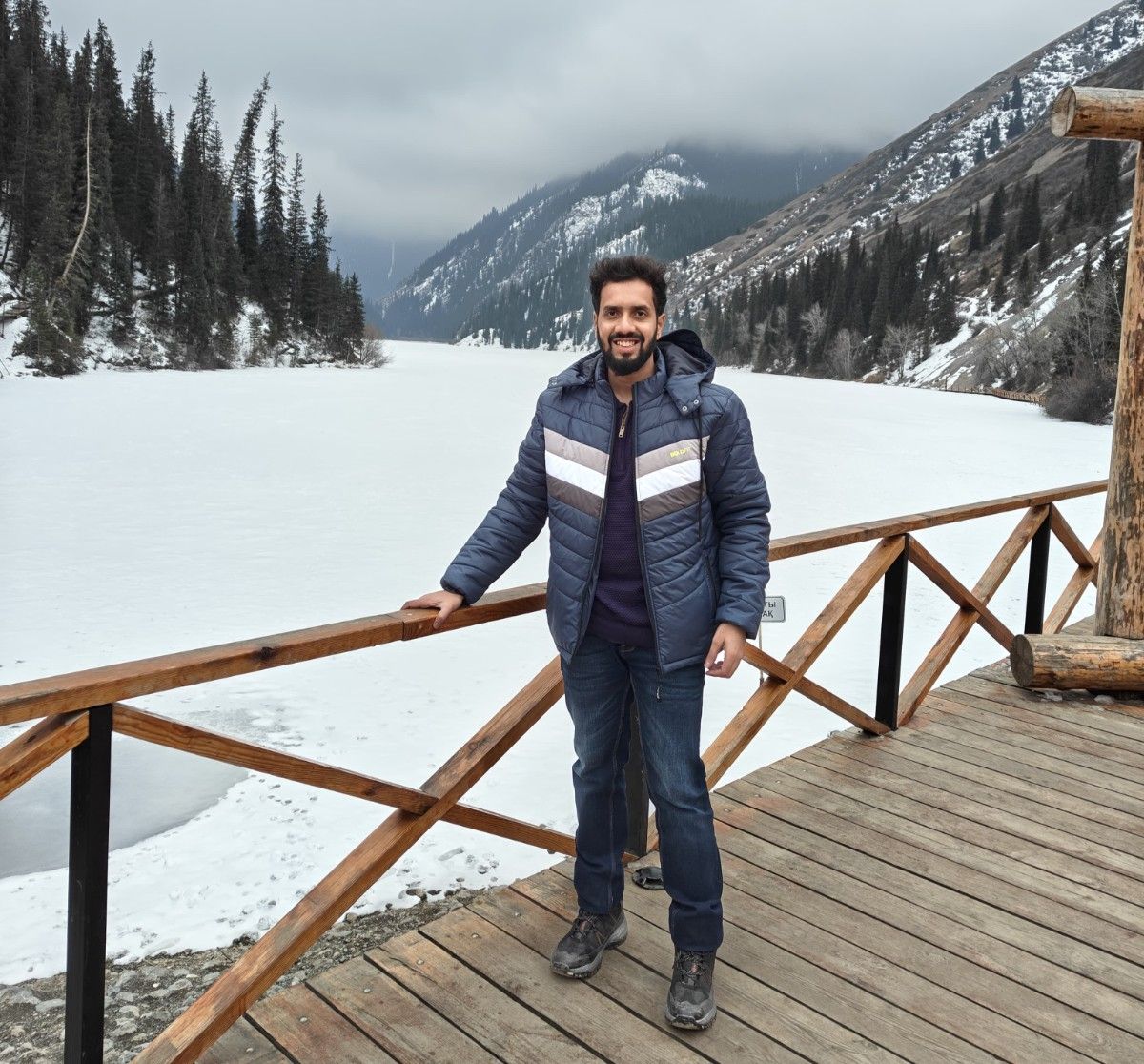
I’m Shreyash Mhashilkar — a full-stack developer by profession, and a passionate explorer of the future at heart.
With a strong foundation in both front-end and back-end , I spend my days building websites and applications that are not just functional, but scalable, intuitive, and user-focused.

